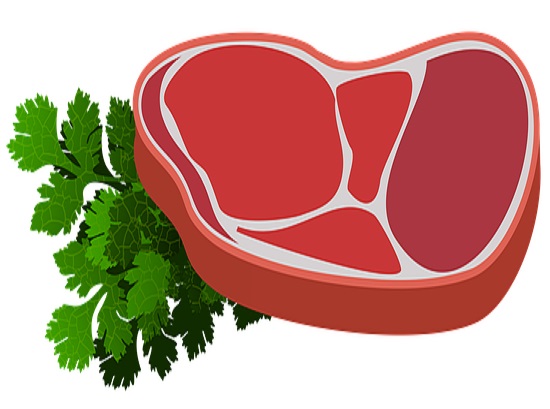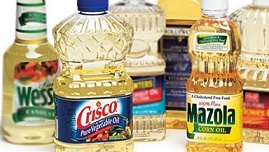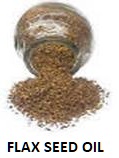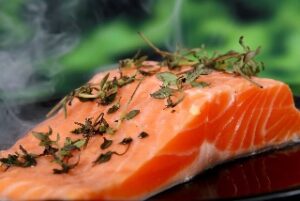
EFA Functions
(3) Eicosanoids - "Cell's First Responders"
- Missing Omega-3 EICOSANOIDS explain most health issues seen today!

Eicosa what!?
EICOSANOIDS are derived (via enzymes) from 4 specific omega-3 and omega-6 fatty acids: EPA, DHA, DGLA, AA residing in cell membranes.
Their job is to act as local hormones mediating activity in cells close to “home” by activating membrane receptors. Kim and Luster, 2007.
The most “talked about” eicosanoid families are the prostaglandins (PGs), leukotrienes (LTs) and thromboxanes (TXs), (others include lipoxins, resolvins, eoxins, and maresins)
Eicosanoid biosynthesis.
Not stored, eicosanoids are synthesized to “alert” levels in all mammalian tissues by hormonal or traumatic stimuli, such as an injury or bacterial presence. Esser-von Bieren, 2017, Strauss and Fitzgerald, 2019 Eicosanoids play a major and complex role acting as “First-responders” in its cell “neighborhood” before the recruitment and infiltration of immune cells. Eicosanoids mediate inflammation / pain, immunity, cellular multiplication, contraction /relaxation of smooth muscle cells in walls of hollow organs, vessel dilation / constriction, blood clotting, neural function, stomach / intestinal wall integrity, renal function and more. If you don’t say it, I will — WOW, WOW, again WOW!!!
The four 20-carbon eicosanoid essential fatty acid sources (eicosa: Greek for 20) are:
Omega-6: Arachidonic acid (AA), Dihomo-γ-linolenic acid (DGLA)
Omega-3: Eicosapentaenoic acid (EPA), Docosahexanoic acid (DHA)
Located in ALL of your cell membranes (except red blood cells), but ONLY IF YOU’VE CONSUMED FOODS / SUPPLEMENTS CONTAINING THEM. If present, these EFAs (released from phospholipid stores in the cell membrane) can be CONVERTED to EICOSANOIDS by enzymes, most prominently:
- COX-1 (primarily maintains cell’s normal eicosanoid levels),
- COX-2 (inducible in most tissues in response to such as injury, allergens, infection, toxins)
- LOX
Eicosanoid actions occur by the activation of receptors on nearby cells.
The parent fatty acids linoleic acid (LA) (e.g. in nut / seed oils) and α-Linolenic acid (ALA) (e.g. in flaxseed and walnut oils) can be converted by enzymes to their “Off-spring” fatty acids (each of which can also be obtained directly by eating certain foods).
LA ⇒ Gamma-linolenic acid (GLA) ⇒ DGLA ⇒Arachidonic acid (AA)
ALA ⇒ SDA ⇒ ETA ⇒ Eicosapentaenoic acid (EPA) ⇒ DPA ⇒ Docosapentaenoic acid (DHA)
The blue highlighted fatty acids can produce anti-inflammatory eicosanoids promoting “back-to-normal” effects, and the pink highlighted fats can produce predominately inflammatory eicosanoids with “call-to-action” activity. To help you determine the effect of eating certain foods, the following chart shows the foods containing high amounts of each of the fatty acids, how they convert from one to another, and whether they produce eicosanoids with inflammatory or anti-inflammatory effects.
| Health Effects of INFLAMMATORY or ANTI-INFLAMMATORY Fatty Acids |
|
|---|---|
| Omega-6.AA | Omega-3 EPA, DHA, / Omega-6 DGLA |
| (AA can be indirectly obtained, derived from: LA, GLA fatty acids, and also DGLA, but this path is inhibited by EPA presence) | (can be indirectly obtained, derived from: ALA, SDA, LA or GLA fatty acids. The DGLA path to anti-inflammatory / “back-to-normal” eicisanoid effects is promoted by EPA presence. |
| Mostly INFLAMMATORY | ANTI-INFLAMMATORY |
| / “Call-to-Action” | / “Calm down / Back-to-Normal” |
| Some food sources of: Omega-6 LA and AA | Some food sources of: Omega-3 ALA |
      |   Some food sources of: Omega-3 SDA,  Some food sources of: Omega-3 EPA and DHA  |
| • Increases pain sensitivity | • Moderates pain |
• Promotes inflammation| • Anti-inflammatory effects |
|
| • Immune system suppression | • Immune system booster |
| • Constricts smooth muscles (except PGE2 dilates them) | • Relaxes smooth muscles |
| • Increases blood pressure (except PGE2 decreases BP) | • Lowers blood pressure nbsp;(vasodilation) |
| • Constricts airways (except PGE2 dilates airways) | • Dilates airways |
| • PGE2 Induces labor / promotes abortion | |
| • Increases cell proliferation (aids repair /also aids tumor development; | • Inhibits cell proliferation (anti-tumorigenic) |
| • Inhibits blood clotting (except Thromboxane is a POTENT promoter) | • Inhibits blood clotting |
| • PGE2 protects gastric and intestinal lining (via COX-1 enzyme) | |
| • Neuro-protective | |
Uncontrolled inflammation due to lack of omega-3-sourced eicosanoids involved in today's common health problems
The multiple, common health problems of our time – cancer, heart disease, asthma, autoimmunity and arthritis (to name a few) can simply stem from a lack of anti-inflammatory omega-3 in our diet.
Eicosanoids are usually produced at basal, “housekeeping” levels to maintain homeostasis (mosty via COX-1 enzymes), but when stimulated by trauma, infection, toxins, allergens or hormones / growth factors in the vicinity of the cell, production is ramped up to “call-to-action” amounts. This is a necessary immune system process for both fighting infection and healing, but prolonged unresolved inflammation (sustained swelling, heat, pain), or too much “call-to-action” without the “back-to-normal” promoters, can lead to uncontrolled tissue damage and chronic low-level Inflammation implicated in many diseases, including cancer, cardiovascular and immune diseases.
An imbalance of omega-6 intake compared to omega-3 is contributing to uncontrolled Inflammation and pain, and to the abundance of chronic diseases seen today.
Several factors since the early 1900’s, have caused a dietary shift away from a more-or-less balanced ratio of omega-6 to omega-3 fats.
Not the least cause was the 1930’s invention of the seed press introducing an abundance of omega-6-rich soy and corn oil into our diet. This has produced an average intake of mostly Inflammation-promoting omega-6 fat with a current estimate of 11-20 times that of anti-inflammatory omega-3. To correct this problem we need to put omega-3 back into our diet.
All we need to do is make a concerted effort to obtain more omega-3 in our diet to counter the inflammatory effects of omega-6
Omega-6 DGLA, which can be converted to anti-inflammatory eicosanoids by COX enzymes, is derived from the same foods that yield omega-6 AA, which the COX enzymes can alternatively convert to inflammatory eicosanoids. However, if there is sufficient omega-3 EPA present, the COX enzymes prefer to convert DGLA to the anti-inflammatory eicosanoids. Similarly, the conversion from EPA to anti-inflammatory eicosanoids takes precedence over converting AA to predominately inflammatory eicosanoids.
Clear as mud – right? 🙂 so maybe this EFA conversion chart will help.
Pharmaceutical companies cashing in on the O6 to O3 imbalance.
Lucrative drugs are developed to prevent inflammation and pain by stopping COX enzymes from converting omega-6 fatty acids to the Inflammation-promoting eicosanoid prostaglandin PGE2 (increases neural sensitivity to pain, a necessary response if you’ve suffered trauma or as an indicator of a brain tumor).
- NSAIDs (non-steroidal anti-Inflammatory) drugs (Ibuprofen®, Naproxen®, which if abused may cause ulcers, bleeding or holes in the esophagus, intestine or stomach NIH );
- COX-1 and COX-2 inhibitors, such as acetaminophen (Tylenol®)), and selective COX-2 enzyme inhibitors (Vioxx®, Celebrex®, Bextra®);
In contrast, the eicosanoid PGE3 produced from omega-3 EPA (consumed or derived from omega-3-rich foods or marine oil supplements) controls and subdues “call-to-action” / Inflammatory effects. Balanced presence of both PGE2 and PGE3 provide appropriately controlled responses to heal and resolve a problem.
Some cell types that release eicosanoids
Epithelial cells
Epithelial tissue is one of the 4 basic human tissue types – the other three are muscle, connective and nervous tissue. There are three types of epithelial cell layers that cover or line internal organs, body cavities and outer skin:
- Epithelium: generally open to external environment. E.g. skin (epidermis), respiratory tract, GI tract;
- Endothelium: fully internal tissue E.g. blood and lymph vessels, cornea;
- Mesothelium: lines major body cavites E.g abdomen (peritoneum), heart cavity (pericardium), lung cavity (pleura);
EPITHELIAL cells (EPCs).
Form a continuous protective covering on all external surfaces of your body, including skin, and the outer surface of blood vessels, brain and other organs. EPCs also form a protective lining inside hollow organs, such as lung (airway), esophagus, nostrils, mouth, throat, ears, genitals, anus, bladder, urethra, uterus (called , intestines, stomach, liver, kidney, urethra.
EPCs can be squamous, cuboidal or columnar and one or more layers. Very importantly – EPCs inside cavities form the surface layer of the mucosa, which secrete a gel-like mucus to protect the organ wall from abrasive irritants and infection (E.g. bacteria), gastric acids in the stomach, and urine in the bladder. When something breaches the mucosa, it precipitates an immune response involving release of eicosanoids.
ENDOTHELIAL cells (ECs) are a specific type of epithelial cell. A single layer of squamous ECs, having filtering and absorption functions, form a continuous protective lining (endothelium) inside blood vessels (i.e. the arteries, veins, capillaries) and lymph vessels. Collectively called vascular vessels, blood vessels transport nutrients and oxygen to all body organs, while lymph vessels carry away their waste. ECs also form the largest protective barrier of the brain, called the blood brain barrier.
Blood vessel endothelial cells – line the arteries, veins and capillaries in the entire circulatory system, including the heart chambers and provide a slippery surface for fluid flow.
- ECs maintain homeostasis of blood fluidity (preventing or promoting blood clotting /platelet aggregation);
Vascular (blood and lymph vessels) endothelial cells and epithelial cells – inside or outside of heart chambers, brain, skin (epidermis), lung (bronchial mucosa, alveolar epithelium), bladder, uterus, intestines, stomach lining (mucous membrane), liver, kidney, pancreas have many roles:
- Regulate vascular tone – Smooth muscle cells (SMCs) are found in the walls of blood and lymph vessels and other hollow organs. ECs and EPCs lining the inside of hollow organ walls communicate with SMCs to relax those muscles in many areas of the body:
√ Vascular wall SMCs (VSMCs / endothelium);
√ Bladder wall SMCs (detrusor muscle / glomerula ECs);
√ Uterine wall SMCs (myometrium / endometrium) – EPCs form the endometrium, which sheds during menstruation;
√ Bladder wall SMCs (detrusor muscle / globular ECs);
√ Heart chamber wall SMCs (myocardium, endocardium ECs);
√ Bronchi (Airway) wall SMCs (Airway smooth muscle);
√ Pulmonary vessels.
- Control permeability of vessel wall – allowing substances in and out of blood or lymph;
- Immunity / Leukocyte traffic – these white blood cells (e.g. lymphocytes, granulocytes[neutrophils, basophils, eosonophils], monocytes, macrophages). Involved with immune response (fight infection and foreign substances), wound repair, acute and chronic inflammation.
- Angiogenesis – new capillaries and blood vessels derived from pre-existing blood vessels required for reproduction, development and repair.
Immune system cells
Mast cells (MCs) – contain histamine and the anticoagulant heparin and recruit T-helper (CD4) cells (important in adaptive IS). When activated by certain stimuli, e.g. specific antigen, MCs can generate prostaglandin PGD2, and leukotrienes LTB4 and LTC4 from arachidonic acid to initiate, dampen or amplify inflammatory responses, and influence the magnitude and duration of subsequent immune responses.
Eosinophils (a type of white blood cell) – host defense against multicellular parasites and involved in allergic reactions. Involved in asthma and COPD.
Basophils (another WBC granulocyte responsible for inflammatory reactions during an immune response, and in the formation of acute and chronic allergic diseases).
Platelets
Eicosanoid receptors
When an eicosanoid “docks” on its own receptor at any location, it has the effect it is designed for at that location. For example, the eicosanoid prostacyclin (PGI2) has receptors in the pulmonary arteries and veins, carrying deoxygenated and oxygenated blood to and from the lungs. PGI2 dilates those vessels.
References
NIH National Library of Medicine
Kim, N. D., and Luster, A. D. (2007). Regulation of immune cells by eicosanoid receptors. ScientificWorldJournal 7, 1307–1328.
Esser-von Bieren, J. (2017). Immune-regulation and-functions of eicosanoid lipid mediators. Biol. Chem. 398, 1177–1191.
Strauss, J. F., and FitzGerald, G. A. (2019). “Chapter 4 – steroid hormones and other lipid molecules involved in human reproduction,” in Yen and Jaffe’s Reproductive Endocrinology (Eighth Edition), eds J. F. Strauss and R. L. Barbieri (Amsterdam: Elsevier), 75–114e117. doi: 10.1016/B978-0-323-47912-7.00004-4
O’Sullivan A et al: Grass silage versus maize silage effects on retail packaged beef quality, J Anim Sci Jun;80(6):1556-63, 2002.



















